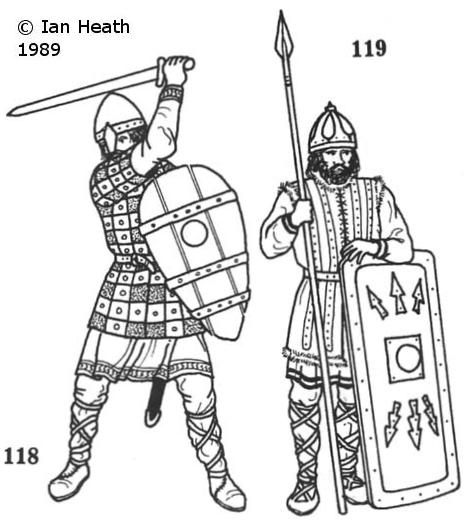
POLISH HEAVY INFANTRYMEN, 11th-12th CENTURIES
An extract from Armies of Feudal Europe 1066-1300by Ian Heath

118 & 119. POLISH HEAVY INFANTRYMEN, 11th-12th CENTURIES
Called tarczownicy or ‘shield-carriers’, such infantry were supplied by those able to afford heavier equipment. Their dress and arms changed little from the 11th century to the 12th. The most common type of body-armour consisted of a three-quarter length sleeveless leather or quilted linen jerkin, often reinforced with small iron plates or strips of studded leather and often fur-trimmed. 118 depicts an elder, his studded leather armour being somewhat more elaborate than that of 119. He wears a type of nasal helmet which became popular in the 12th century.
Basic arms consisted of an 8-foot thrusting spear, a shield, and secondary armament of a short sword or, more commonly, a bearded axe. Knives might also be carried. The rectangular wooden shield is a typical Slav design and was used in Russia, and possibly Serbia and Bulgaria too, at this date. It was flat, often painted, and had an iron rim, boss and ornament. From the rims and other remains of such shields that have been found, Polish archaeologists estimate that they were about 120 cm (nearly 4 feet) tall, which effectively puts them in the same class as pavises.